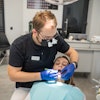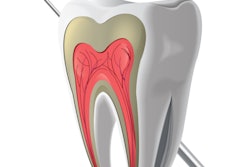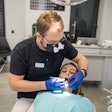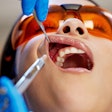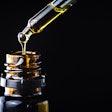A modified triple antibiotic paste (mTAP) containing azithromycin (AZM) may more effectively treat periapical inflammation (AP) compared to traditional minocycline pastes, according to a study recently published in the International Dental Journal.
Additionally, this approach may offer anti-inflammatory effects without causing tooth discoloration, the authors wrote.
“Azithromycin has the potential to serve as an alternative to minocycline,” wrote the authors, led by Tingting Meng of the Nankai University School of Medicine in China (Int Dent J, July 15, 2025).
For this study, researchers used a rabbit model of AP to evaluate the effects of traditional antibiotic pastes (TAPs) and mTAPs on root canal infections. Antibacterial tests, tooth discoloration experiments, and examinations for microbial changes were conducted, they wrote.
TAP included ciprofloxacin, minocycline, and metronidazole, while mTAP replaced minocycline with azithromycin. Additionally, nine extracted human premolars were used to assess tooth discoloration, with samples divided into control, TAP-treated, and mTAP-treated groups.
After two weeks, both TAP and mTAP treatments significantly reduced the size of periapical lesions in the rabbits, with mTAP showing a greater reduction than TAP. Also, mTAP demonstrated stronger immunomodulatory effects in vitro, they wrote.
Unlike TAP, which caused noticeable tooth discoloration due to minocycline, mTAP did not result in a significant color change compared to the control group. Additionally, mTAP treatment led to an overall decrease in the relative abundance of bacterial species commonly found in periapical infections.
However, the study was limited by a small sample size. Adding more animal samples in future research could help better understand how AZM affects bacteria, the authors added.
“Leveraging the anti-inflammatory and immunomodulatory attributes of AZM, the mTAP exhibits potent antibacterial and anti-inflammatory properties without inducing tooth discoloration,” they concluded.

